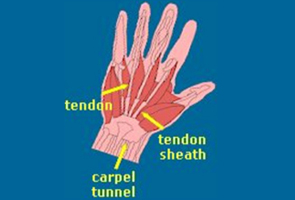Risk
Using a hand tool that requires you to use a forceful grip, hold your hand or wrist in an awkward position, and/or results in excessive hand vibration can lead to work-related musculoskeletal disorders (WMSDs). These may involve injuries to muscles, tendons and/or nerves in your hands and wrists. Such injuries usually develop over time.
Early symptoms may include achy, tired hands and wrists that feel better after rest. It is easy to just write these off to a hard day’s work – and in some cases that would be correct. If these symptoms persist and become more frequent, or cause you to stop working and rest your hand more frequently, you may already be injured.


